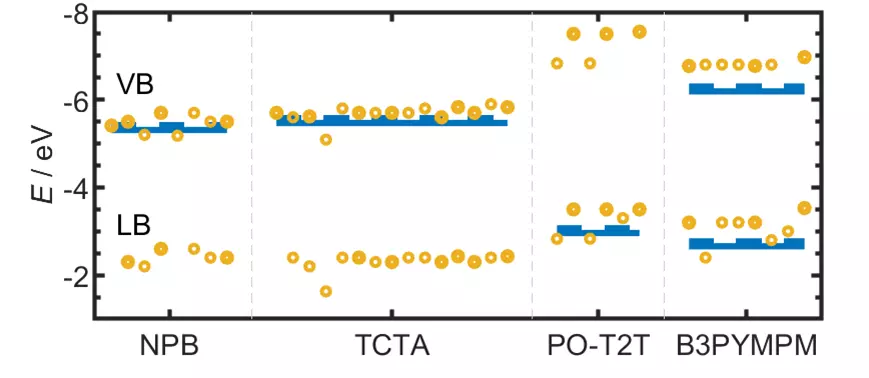Investigating Charge Transport in Organic Semiconductors with Electrochemical Methods and Modelling
Today organic semiconductors are used in many technological applications. However, these materials must be thoroughly studied to design even better products. Our project aims to improve the characterization of organic semiconductors using electrochemical measurements in combination with computer simulations.
Contributors: G. Kissling, E. Knapp, K. Pernstich
Partner(s): Fluxim AG
Funding: Swiss National Science Foundation (SNSF)
Duration: 2020–2022

Nowadays organic semiconductors are widely used in display and lighting applications (OLED TVs and light panels) and in the fabrication of novel transistors, sensors, data storage elements and solar cells. To produce better devices, the understanding of the physical processes and the materials properties of organic semiconductors needs to be improved.
In this interdisciplinary project we investigate organic semiconductor materials using electrochemical methods and (theoretical) multiphysics modelling. The project combines the ICP department’s computer modelling-expertise with fundamental electrochemistry research.
The aim of the project is the development of a reliable method for the characterization of a range of organic semiconductor properties and materials parameters. The experiments will give us insight into some properties which have so far been very hard or almost impossible to measure. The data will be fed into a detailed theoretical model. Common numerical models can then be optimized using our experimental results.
We are using electrochemical methods to characterize organic semiconductor materials, consisting of molecules such as the ones shown in Figure 1. The molecules will either be electrochemically studied in solution or as thin films adsorbed onto substrates. The stability and the semiconductor properties of the materials, such as the positions of the valence and conduction bands and of defect states, will be investigated.

The positions of the valence and conduction bands were analysed in detail using electrochemical experiments in solution, as illustrated in Figure 2, and correlate well with literature data, as can be seen in Figure 3.

In the coming year the research will focus on comparing experimental results obtained in solution to experimental results obtained on thin films. This project may lead to an improved understanding of the current state of the art by providing inputs that lead to the development of more accurate models for organic semiconductor materials characterization.